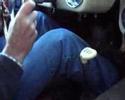1957 Pegaso Z-102
The Z-102 started life as two prototypes in 1951 as a coupe and a drophead. The coupe and convertible had dumpy steel bodies, and weight was an issue to the extent that Pegaso made the decision to revert to alloy for the coachwork. Coachbuilder Touring then 'beautified' the design, replacing the grille with a two-piece cross, lowering the car, repositioning the foglights, and simplifying various details to give it a clean profile, similar to the contemporary Aston Martin DB2 and the Lancia Aurelia, that was the most memorable and numerous of all Z-102 bodies.
The Z102 entered production with a 2.5 (2472cc) litre engine as used in the prototypes, though later there were variants with 2.8 (2816cc), and 3.2 (3178cc) litre DOHC desmodromic 32-valve V8 360 hp (270 kW) engines with multiple carburetors or optional supercharger. Horsepower ranged from 175 to 360, and, transferred through a five-speed gearbox and gear-driven camshaft, the fastest could reach 155 miles per hour (249 km/h), exceeding Ferrari autos, thus making it the world's fastest production car at the time. The base model had an 120 mph (192 km/h) top speed.
The main beams of the car's frame had large lightening holes, and the wheel wells under the body were used as stressed members. This rear-wheel-drive car had its transmission in the rear, connected to the differential (making it a transaxle). But it was unusually located behind the differential within a reverse A-frame whose apex was at the rear of the chassis. A fuel tank was situated on each side of the transmission.
The rear suspension was of the De Dion type, with the unusual feature that, to restrain the tube from side-to-side movement, its tube had a small wheel at its midpoint that rolled in a vertical channel on the front of the differential (which in a De Dion system is bolted to the chassis) instead of using a Watts linkage or a Panhard rod.
However, the cars were heavy and brutish to drive and competition success was virtually nonexistent. Because the cars were built on a cost-no-object basis, this caused financial difficulty in the company. A simplified and cheaper version, the Z-103 with 3.9, 4.5 and 4.7 litre engines, was put into production, but to no avail, and the Z-102 was discontinued after 1958. Just 86 cars were produced, and out of these, only 28 cabriolets were built.






